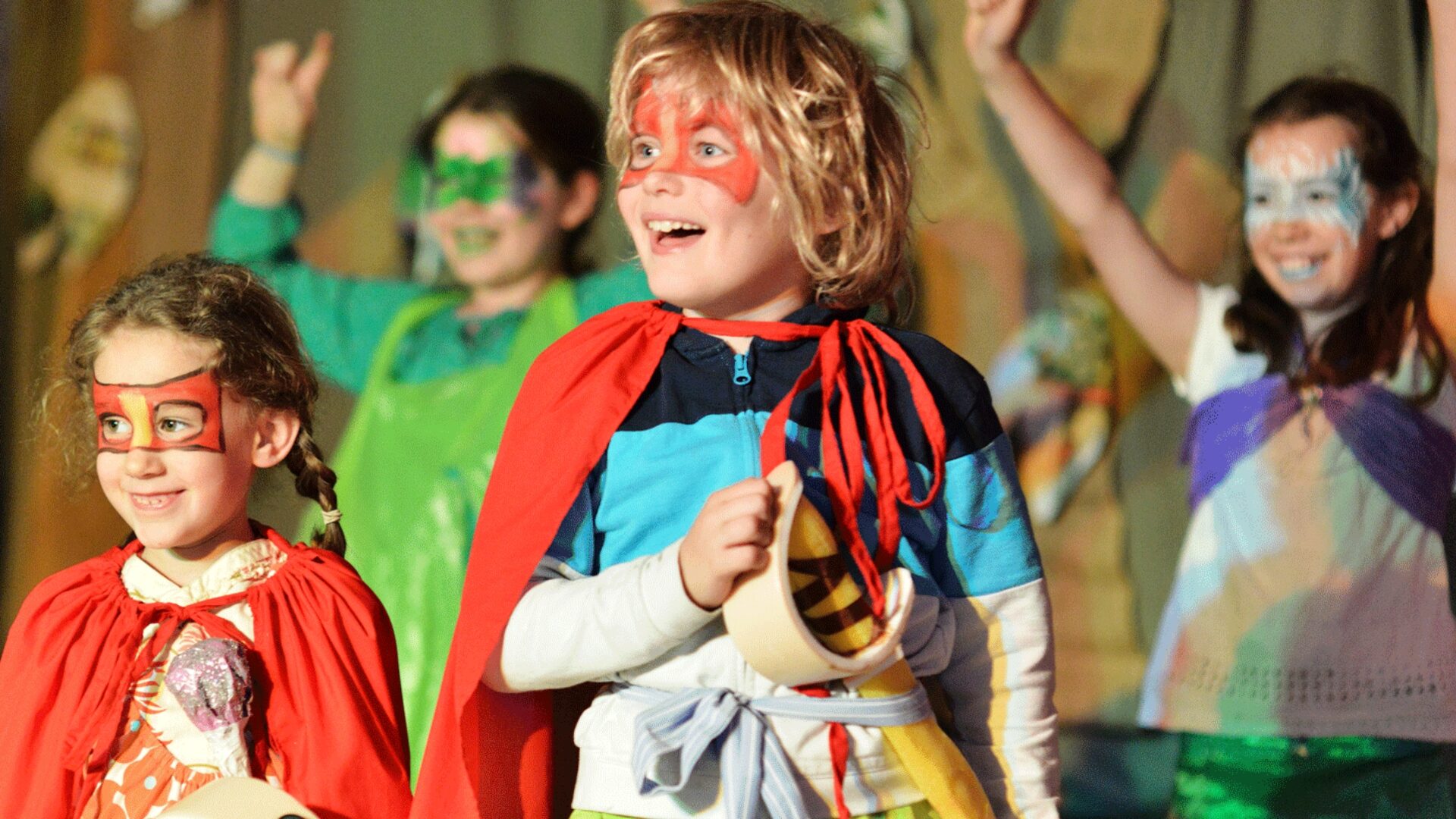
Language learning for children can be a dynamic and exciting adventure. This ultimate guide will explore five drama activities that boost your child’s linguistic skills and ignite creativity and self-expression. Get ready to witness a transformation in language learning success through the joy of drama!
1. Embodying Characters Through Role-Play
Engage your children’s imagination by having them step into the shoes of their favorite characters. Role-play is an exciting way for children to practice language in a pretend scenario. Role-play allows kids to experiment with language and emotions, expand their vocabulary, and gain confidence in expressing themselves.
Stepping into New Shoes: Real-Life Situations
1. Create a dress-up box filled with various outfits and accessories. Children can dress up as doctors, chefs, or any character of their choice and act out scenarios, encouraging them to speak as their characters would, boosting their confidence in using new words.
2. Real-life simulations such as playing ‘shops’ or ‘restaurants’ offer practical language practice while they “sell” and “buy” from you using their new language skills.
2. Crafting and Performing Dialogues
Encourage little learners to write and perform dialogues. It’s a creative way to practice the construction of sentences and the use of vocabulary in an entertaining context that feels like play.
Encourage your child to craft dialogues that fit these everyday scenarios. Performing the dialogues adds an element of excitement and makes words come alive.
Dialogue Writing: A Creative Exploration
Have kids brainstorm and script out dialogues for different scenarios, such as shopping at the market, going to the playground, or ordering at a restaurant.
Spotlight on Performance
Children perform their written dialogues, practicing pronunciation and gaining confidence in speaking the language.
3. Interactive Storytelling Sessions
Engaging with tales sparks joy and imagination, creating lively scenarios for learning words and sentences. Fun props and playful outfits add extra excitement, holding their focus firmly on the fun storytelling experience.
Bringing Stories to Life
Pick a favorite storybook and have children act it out. Assign roles to each child and have them narrate parts of the story. Use simple scripts or allow them to improvise based on the plot.
Enhancing with Props and Costumes
Enhance the storytelling experience with props and costumes. A crown for a king, a wand for a fairy, or even homemade items can make the story more vivid and engaging.
Fancy some free resources?
Experience everything One Third Stories has to offer with an ebook, audiobook and activities delivered right to your inbox.
4. Mime and Gesture Games
Engage children with mime and gesture games and help them learn to convey meaning without words, improving their understanding of non-verbal cues in communication.
Silent Communication: A Challenge to Creativity
Use mime games to depict different actions or emotions and have the children guess what’s being portrayed. Require players to answer in the language they are learning and build vocabulary. Enhance their interpretive skills and introduce them indirectly to the power of non-verbal cues in language.
Guessing Games and Charades
Popular games like charades foster quick thinking in a new language as players guess and act out words or phrases, adding fun and laughter to the learning process. Children are given a scenario and must create and speak their lines spontaneously, enhancing their ability to use language quickly.
5. Improvisational Theater Exercises
Improv can be a thrilling challenge that promotes quick thinking in the target language. Improvisation encourages spontaneous use of language and quick thinking. Provide a basic scenario and watch children create dialogues on the fly. It’s not just educational; it’s fun!
Thinking on Your Feet
Set up scenarios where children must improvise dialogue based on prompts, including unexpected events like meeting a talking animal or finding a hidden treasure.
The Yes, And… Principle
The “Yes, And…” principle from improvisational comedy encourages positivity and collaboration. When someone introduces an idea, you accept it with “Yes” and then expand it with “And…” It’s a great way to build on ideas without criticism.
Example for Kids:
Let’s say Alex and Taylor are imagining a magical garden.
Alex: “There’s a giant sunflower that touches the sky!”
Taylor: “Yes, and there’s a tiny door on it leading to a secret room full of treasures!”
This way, they keep adding to the story together, teaching them to listen, respect, and build on each other’s ideas, fostering creativity and teamwork in a fun manner.
Conclusion
There you have it! We have presented five drama-filled activities that bring joy and language success into your learning space. The key to effective language learning is engagement, and what better way to captivate young learners than with a bit of theatrical fun?
Encourage participation and effort, and keep the atmosphere fun and light-hearted. With these drama activities, language learning becomes an adventure in creativity and expression!
Remember, the goal is not perfection but meaningful engagement with language. These drama-based activities provide a dynamic educational experience that helps young learners absorb new words, develop conversation skills, and build confidence.
The rule of affirming and adding information teaches children to listen, understand, and extend conversations naturally.
Incorporating these drama activities into language learning makes the process enjoyable and effective and can be adapted to different age groups, attention spans, and learning objectives. Remember, the goal is to create a supportive environment where language flourishes organically. Now, set the stage and watch your little learners transform into confident language maestros!
Children are language sponges, absorbing words from all directions, never still for a moment. Fun drama activities are one secret ingredient to mastering new languages. Keep it playful and moving, and voilà – language learning magic!



Choose a language
Our courses are available in French, Spanish, Italian and German.
Select a subscription
Choose between monthly or annual payment options.
Start learning
Receive your first audiobook and Story Box, and let the learning begin!.

Choose a language
Our courses are available in French, Spanish, Italian and German.

Select a subscription
Choose between monthly or annual payment options.

Start learning
Receive your first audiobook and Story Box, and let the learning begin!.
